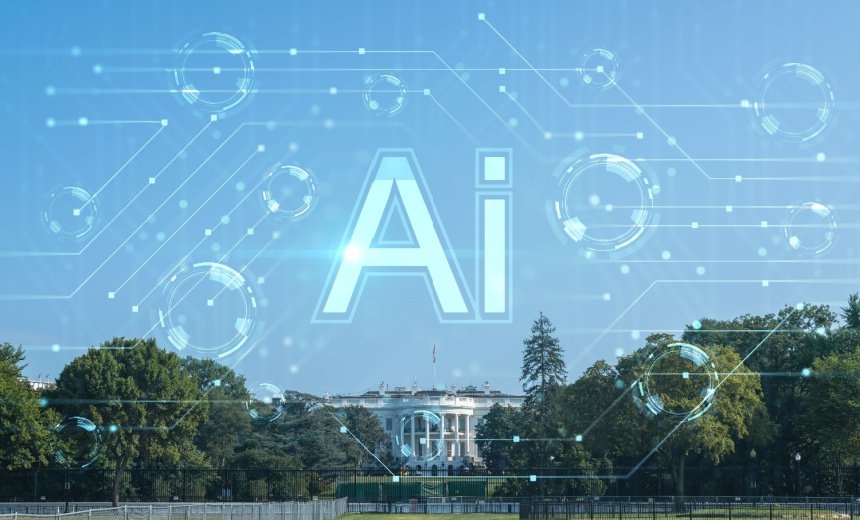Education
Traditional vs. Modern AI-Based Education: Balancing Human Effort and Technological Guidance

Introduction
Education has always been the foundation of personal growth, societal development, and economic progress. Over the centuries, the methods of education have evolved—shifting from oral traditions to printed books, from chalkboards to interactive screens, and now, from teacher-led classrooms to artificial intelligence (AI)-driven learning platforms.
While AI has opened doors to personalized education, accessibility, and efficiency, the transition from traditional to modern education has raised important questions: Can machines replace the dedication of parents and teachers? Will AI-based systems guide children toward success, or could they lead them astray without proper guidance? To answer these questions, we must explore the characteristics of both traditional and modern AI-based education, the role of parents and teachers in this shift, and the ethical responsibilities that come with it.
1. Traditional Education: The Pillars of Hard Work and Personal Guidance
Traditional education has always been rooted in the human connection between teachers, students, and parents. Its strength lies in:
Personal Attention and Mentorship:
Teachers not only convey academic knowledge but also mentor students in life skills, discipline, and ethics. Parents complement this by monitoring homework, attending school meetings, and instilling values at home.
Human Understanding of Learning Pace:
Teachers understand when a student is struggling—not just from test scores but from subtle behavioral cues. This emotional intelligence ensures that no child is left behind.
Emphasis on Hard Work:
In the traditional system, students are encouraged to push through challenges, develop perseverance, and value the process of learning, rather than relying on shortcuts.
Community-Based Learning:
Schools create social environments where students learn teamwork, leadership, and respect through face-to-face interactions.
Moral and Cultural Education:
Alongside academic learning, traditional systems often integrate moral lessons, civic responsibilities, and cultural heritage—ensuring holistic development.
However, traditional methods also have limitations—such as rigid curriculums, slower adaptability to individual needs, and limited access to quality education in rural or underdeveloped areas.
2. Modern AI-Based Education: Automation and Personalization
In the modern era, AI has entered classrooms and homes, transforming how students learn. AI-powered platforms offer:
Personalized Learning Paths:
AI systems adapt content according to a student’s performance, offering customized challenges or additional practice as needed.
24/7 Availability:
Students can access learning materials anytime, removing geographical and time barriers.
Instant Feedback and Progress Tracking:
AI systems can evaluate a student’s work instantly, allowing them to learn from mistakes without long delays.
Multimedia-Based Learning:
Lessons can be delivered using interactive videos, games, simulations, and virtual reality—making complex topics easier to understand.
Reduced Workload for Teachers:
AI tools automate grading, attendance, and administrative tasks, allowing educators to focus more on personalized guidance for each student.
Despite these benefits, AI-based education has risks:
Reduced Human Interaction: Overreliance on machines may limit a child’s emotional and social development.
Ethical Risks: Without parental and teacher guidance, children might misuse technology or fall prey to misinformation.
Lack of Emotional Understanding: AI cannot yet fully understand human emotions, body language, or the deeper context behind a student’s struggles.
3. The Parent and Teacher’s Role in the AI Era
Even in a modern AI-based education system, the role of parents and teachers is irreplaceable. The focus has shifted from being the sole source of knowledge to being mentors, guides, and ethical anchors.
a) Teaching How to Use AI Effectively
Parents and teachers must help children understand that AI is a tool—not a replacement for human thinking. They should guide students in how to verify information, cross-check sources, and use AI for constructive purposes rather than entertainment alone.
b) Ethics and Digital Citizenship
In a connected world, children face risks such as cyberbullying, privacy invasion, and exposure to harmful content. Parents must teach children about online safety, data privacy, and respectful digital communication.
c) Preserving Human Values
Hard work, patience, empathy, and teamwork should not be lost in the AI era. These qualities need active reinforcement at home and in school.
d) Emotional Support
AI can simulate tutoring but cannot replace the encouragement of a parent or the inspiration of a passionate teacher. Emotional motivation is crucial to a child’s success.
4. Balancing Tradition and Modernity
The future of education lies in blending the strengths of both systems. Here’s how:
Hybrid Learning Models:
Combine AI-based lessons with teacher-led discussions to ensure both personalization and human mentorship.
Parent Training Programs:
Schools should organize sessions for parents to learn how to use AI-based apps so they can monitor and guide their child’s progress effectively.
Ethics Curriculum:
Integrating digital ethics and social responsibility into the school syllabus will prepare students to be responsible tech users.
Community Learning with AI Support:
Even in AI-driven learning, group projects, debates, and sports should remain to build social and leadership skills.
5. Risks of Ignoring Ethical Guidance in AI Education
If parents and teachers do not take an active role, several negative outcomes may occur:
Overreliance on AI: Students may depend too much on AI-generated answers, losing critical thinking skills.
Loss of Discipline: Without human supervision, students might avoid challenging tasks and rely on shortcuts.
Isolation: Lack of peer interaction can lead to weaker communication and teamwork abilities.
Exposure to Harmful Content: AI systems, if not properly monitored, might recommend inappropriate or misleading materials.
Conclusion
Traditional education built a strong foundation of discipline, values, and perseverance through the hard work of parents and teachers. Modern AI-based education brings efficiency, personalization, and global accessibility. But while technology can make learning faster and more engaging, it cannot replace the human touch that shapes character, instills ethics, and inspires greatness.
The real challenge is not choosing between traditional and modern education but learning how to merge them effectively. Parents and teachers must evolve into digital mentors—helping children navigate AI-based learning while reinforcing the timeless values that define true success.
If we achieve this balance, AI will not replace human educators—it will empower them, creating a future where children are both technologically skilled and ethically grounded.
Education
RFK Jr. testifies on Capitol Hill, AI in education, generational change in Congress – Spectrum News
Education
STC Computer Information Technology program Leads the Way for AI Education

Texas Birder Business
By Joey Gomez
McALLEN, Texas – Artificial Intelligence (AI) is at the core of South Texas College’s Bachelor of Applied Technology in Computer Information Technology (BAT-CIT) program as it pioneers industry certificates on a statewide and national scale for students.
Leadership and faculty with the program say they have now awarded more than 2,250 certificates to students taking BAT-CIT courses in the five years since integrating what the program calls AI-focused “microcredentials” tied to Google and Amazon Web Services (AWS) in fall 2020.
The priority on industry credentials is giving graduates a unique and competitive edge in the job market, according to program Department Chair Saeed Molki.
“In the entire state of Texas and throughout the entire United States, no one has done such a thing,” Molki said, referring to the number of credentials awarded to students. “We do not overstate all the work we have done for students in the last five years.”
Crediting college leadership including STC President Ricardo J. Solis, Ph.D., along with Vice President and Provost for Academic Affairs and Economic Development, Anahid Petrosian, Ph.D., and Dean of Math, Science, IT and Bachelor Programs Ali Esmaeili, Ed.D., for encouraging the push toward microcredentials and AI, Molki said the effort began with a vision to embed industry certifications directly into courses.
The effort culminated this year in 2025 as the program added four new AI-related courses, which includes an Advanced Artificial Intelligence course for fourth-year students and an upcoming Data Science and Machine Learning in Cybersecurity course which begins in spring 2026.
Each course is meant to build on the last to create a progressive pathway to advanced AI concepts, according to BAT-CIT faculty.
“So essentially, students are going to be getting a certificate with every class,” said Assistant Professor of Computer Science, Nicholas Hinojosa. “Last semester, we even implemented that every student who is taking our 1301 class, which is our most basic class, will complete a certificate in Google Artificial Intelligence Essentials. These are students who are coming fresh from high school to STC.”
The BAT-CIT program offers seven industry-recognized certifications, that align with coursework so students earn credentials as they progress through the program.
CIT Assistant Professor Menghung Wu, Ph.D., emphasized that the curriculum builds from Python to machine learning and then to advanced AI which ensures students understand both the technical skills and theory behind AI systems.
“AI is no longer just a tool, it’s the foundation of how technology is advancing,” Wu said. “This is why in our program, we don’t just introduce students to the basics, we guide them step-by-step into the core of artificial intelligence. That deeper knowledge is what will set them apart as innovators in the workplace.”
BAT-CIT student Andrea Rios is the founder and current president of the program’s Computer Science Club and organizes various activities and speakers for students. Reflecting on the priority the program places on AI-related credentials, Rios said faculty are doing a phenomenal job by embracing the new technology and gauging the industry.
“The biggest way the faculty in the BAT-CIT program help students is by understanding the market and the workplace and realizing just how quickly it changes, especially in the technology industry,” Rios said. “At STC, we are taught to adapt and I think that’s the most important thing I have taken from my time here.”
For more information on STC’s Computer and Information Technologies program visit www.southtexascollege.edu/academics/computer-info-tech/index.html.
Education
Trump Continues Push for AI in Schools as FTC Probes Risks

White House Kick Off School Year With AI Education Efforts, Public-Private Collabs
The White House is rolling out its Presidential Artificial Intelligence Challenge with new commitments to further expand the use of AI in education just as the school year begins – and as the Federal Trade Commission readies a probe into whether popular AI chatbots are harming children’s mental health.
See Also: OnDemand | Transform API Security with Unmatched Discovery and Defense
U.S. President Donald Trump hosted several big tech leaders Thursday night “for discussions centered on harnessing [AI] to propel the U.S. to the forefront of global innovation,” according to a press release the White House published Friday. The meeting followed the second White House Task Force on AI Education summit, where First Lady Melania Trump announced a series of commitments to help further the administration’s AI challenge, including forthcoming toolkits, webinars, classroom guides and agency action items to increase the implementation of AI training materials and tools in K-12 schools nationwide.
Education Secretary Linda McMahon said during the meeting the agency is “fully aligned with the Presidential AI Challenge” and “encouraging students and educators to explore AI technologies with curiosity and with creativity.” Experts have also warned the federal push to rapidly deploy AI tools across American classrooms could come with cybersecurity vulnerabilities, privacy risks and potential harm to minors (see: Trump Wants AI in Classrooms. Where Are the Safeguards?).
Initiatives to further AI in education include billion-dollar commitments from companies like Alphabet and million-dollar agreements with IBM – both of which had their CEOs at the education summit. Labor Secretary Lori Chavez-DeRemer said that her agency is in the process of building new private sector partnerships to expand access to AI education and training materials nationwide. Google CEO Sundar Pichai said efforts are designed “in the service of helping the next generation to solve problems, fuel innovation and build an incredible future.”
Recent studies have shown AI tools and systems may have some positive benefits when introduced in the classroom but in their present form typically introduce major risks including the presence of inappropriate and harmful content. According to the Wall Street Journal, the FTC is preparing to send many of the top tech companies developing the leading AI tools that were present at the White House this week letters demanding information while investigating whether children’s mental health is impacted by the use of chatbots like OpenAI’s ChatGPT.
The White House Presidential AI Challenge invites U.S. students to complete a project that involves AI tools or systems to address community challenges, and encourages educators to use creative approaches to teaching and using AI technologies in K-12 education. Trump signed executive orders in April encouraging public-privte partnerships to expand AI in K-12 education, establishing the Presidential AI challenge and directing agencies to work with leading AI organizations in creating new resources specifically for K-12 education.
OpenAI has announced plans to create accounts for teens with parental controls amid lawsuits against AI companies over teenage suicides from families alleging their children were adversely affected by their tools.
-

 Business1 week ago
Business1 week agoThe Guardian view on Trump and the Fed: independence is no substitute for accountability | Editorial
-
Tools & Platforms4 weeks ago
Building Trust in Military AI Starts with Opening the Black Box – War on the Rocks
-

 Ethics & Policy1 month ago
Ethics & Policy1 month agoSDAIA Supports Saudi Arabia’s Leadership in Shaping Global AI Ethics, Policy, and Research – وكالة الأنباء السعودية
-

 Events & Conferences4 months ago
Events & Conferences4 months agoJourney to 1000 models: Scaling Instagram’s recommendation system
-

 Jobs & Careers2 months ago
Jobs & Careers2 months agoMumbai-based Perplexity Alternative Has 60k+ Users Without Funding
-

 Education2 months ago
Education2 months agoVEX Robotics launches AI-powered classroom robotics system
-

 Podcasts & Talks2 months ago
Podcasts & Talks2 months agoHappy 4th of July! 🎆 Made with Veo 3 in Gemini
-

 Funding & Business2 months ago
Funding & Business2 months agoKayak and Expedia race to build AI travel agents that turn social posts into itineraries
-

 Education2 months ago
Education2 months agoMacron says UK and France have duty to tackle illegal migration ‘with humanity, solidarity and firmness’ – UK politics live | Politics
-

 Podcasts & Talks2 months ago
Podcasts & Talks2 months agoOpenAI 🤝 @teamganassi

























